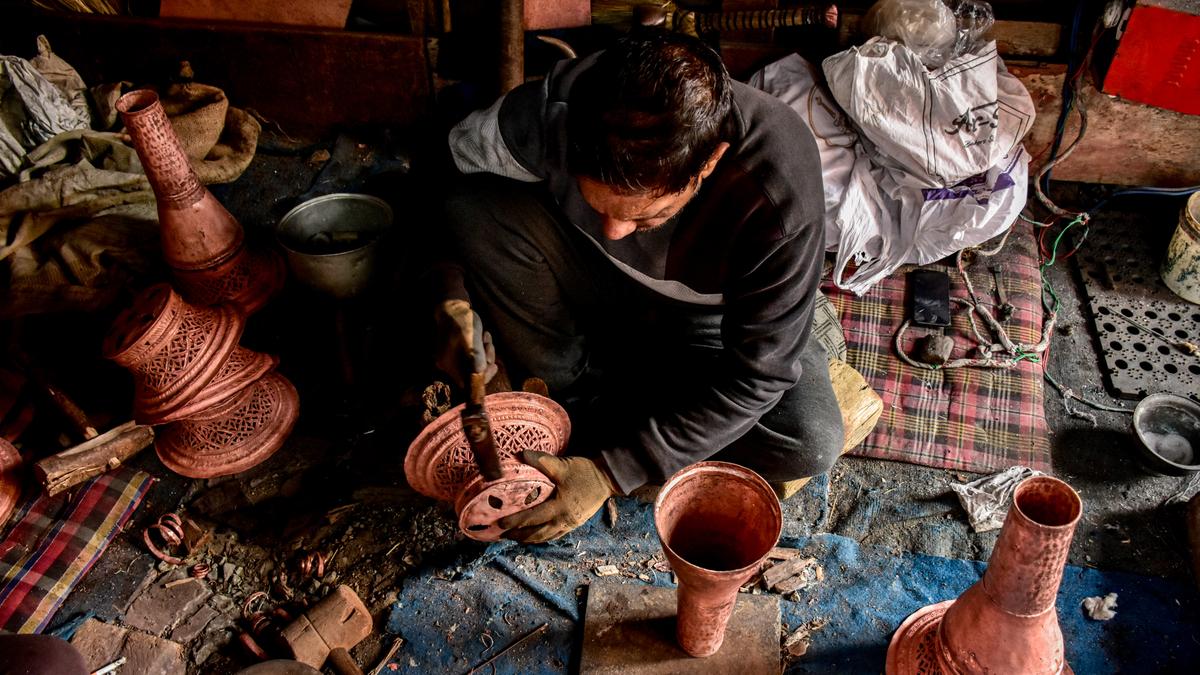How lovely, how obvious, how appropriate that Srinagar be named a World Craft City.
Every lane, every home, every street corner is full of the sights, sounds and presence of weavers and spinners, shawl makers and embroiderers, papier-mâché painters, walnut wood carvers, brass and copper workers, jewellers, namda rug felters, wicker workers, dyers, and printers. The pattern maker’s sing-song chant of the talim echo as the carpet karigars deftly tie knots in time with its beat.
Kashmiri craft is an important means of employment and earning; it is also a form of self-expression and identity. In a population of just over 10 million, nearly 3.50 lakh people are directly engaged in craft. In recent decades, even women have turned to embroidery, long a male preserve, as their husbands and fathers were absent — dead, in jail, or in an Indian metro eking out a living.
An artisan laying out strips of felt to start a namda rug
| Photo Credit:
Laila Tyabji
Block printing amid gunfire
As I read the happy news, my mind flashes back to 2005. I’m in Jan Mohammad’s tiny loft in the old city, getting fabric block-printed for embroidery. The scene is untouched by the years: shelves stretched to the ceiling with intricately carved mulberry wood blocks, some over a 100 years old. Their motifs of chinar leaves, paisleys, kingfishers and iris are inspired by the flora and fauna of the Valley.
Jan Mohammad block printing
| Photo Credit:
Laila Tyabji
Jan Mohammad kneels at a low table, his pheran and long fingers equally impregnated with colour. A samovar of salt tea by his side, a hookah bubbling nearby. The sound of the block, coated with rice flour and resin, a rhythmic counterpoint to the wheezing music of his ancient transistor. His austere face is intense, with the concentration of an artist.
A muezzin chants, and other calls to prayer resonate in the quiet air. A couple of women sit embroidering. The regular puk-puk of their ari needles puncturing the taut cloth on their embroidery frames has a soothing quality — a sound familiar in the Valley over the centuries.
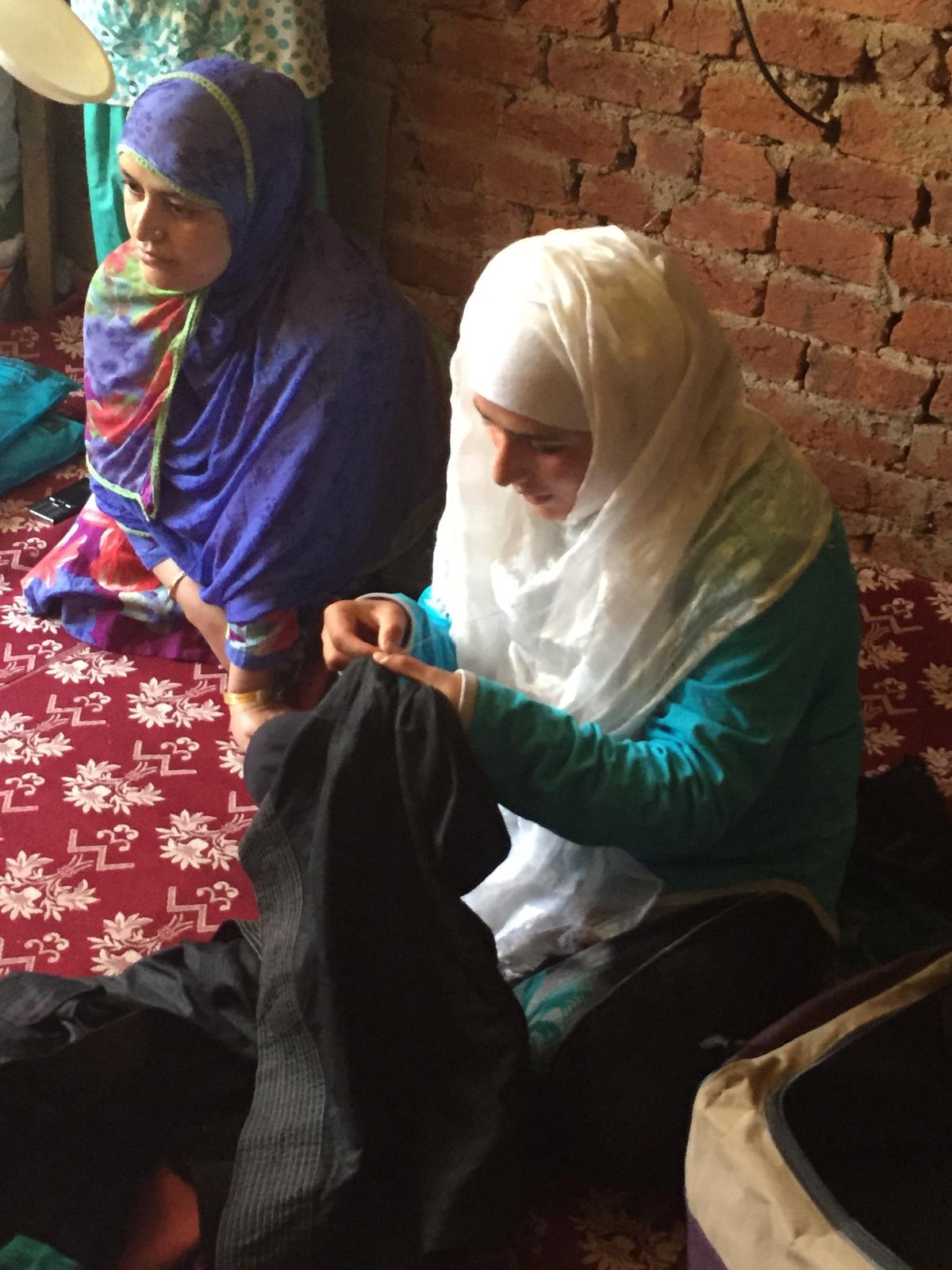
Women embroidering
| Photo Credit:
Laila Tyabji
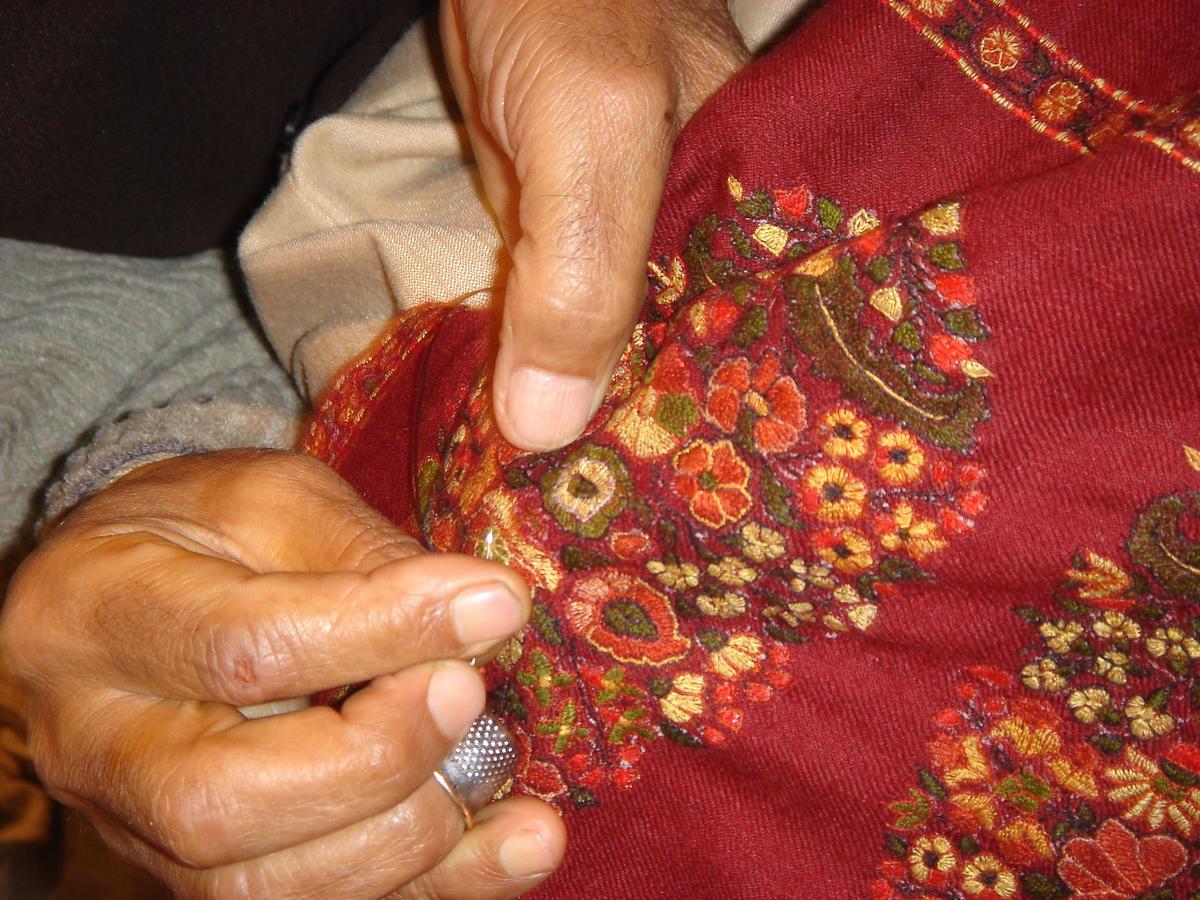
| Photo Credit:
Laila Tyabji
But sadly, the tranquillity is an illusion. A sudden crack of gunfire bizarrely echoes Jan Mohammad’s fist banging on his block. Smoke fills the air. A stone smashes the window. Peering out, we see a mob hurling rocks, a gun battle with armoured jeeps and police, shops being set afire. They are protesting the death of two young boys killed in a raid.
We are prisoners for the day. A curfew is announced — there will be no more work this week. Naid Kadal, where we are, is a hub of insurgency. People live in fear: of getting drawn into confrontation, of armed reprisals, of almost daily bandhs. The economy of the Valley, long dependent on centuries-old rhythms of tourism and craft, is in decline.
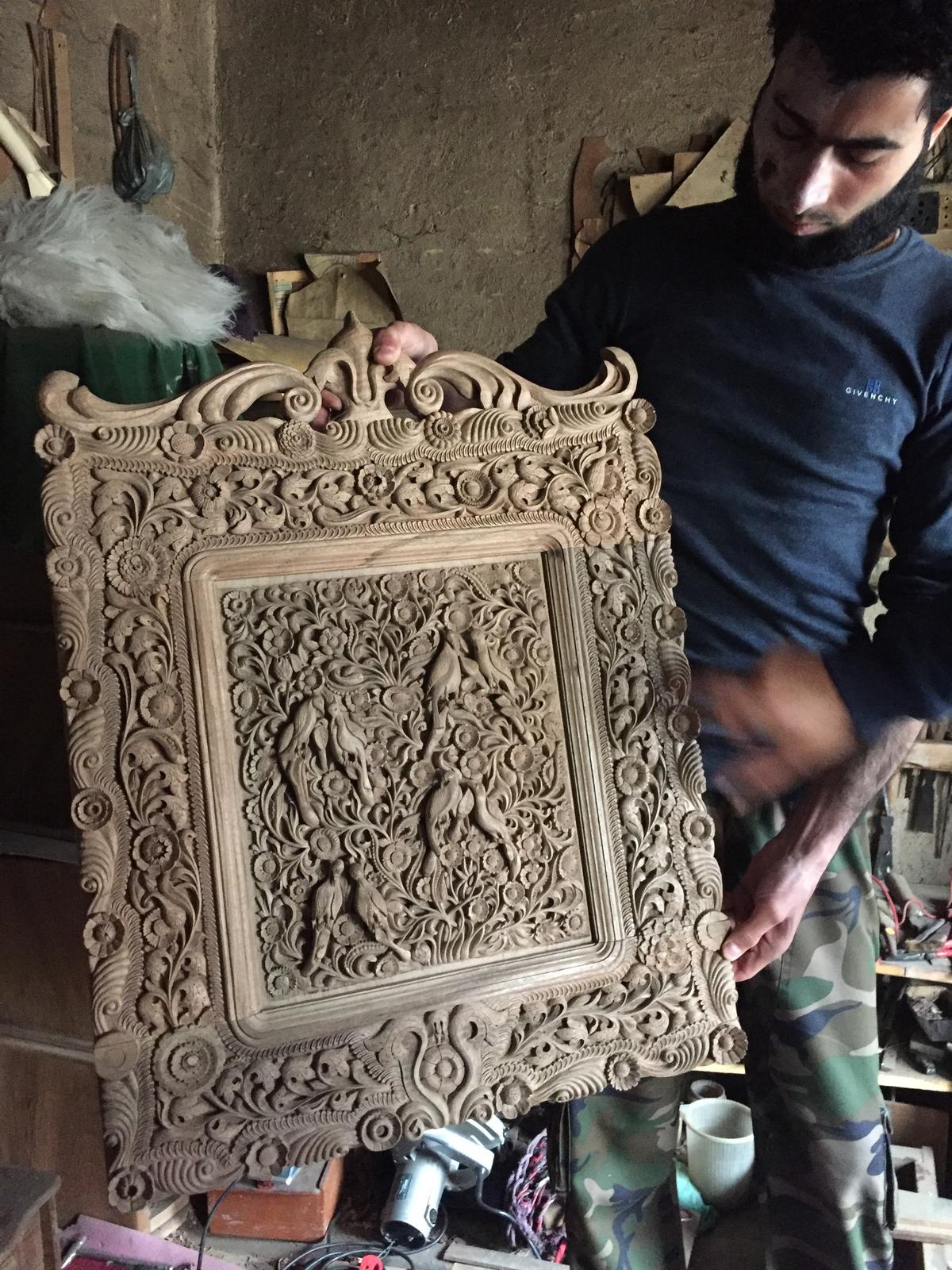
A slab of wood becomes intricate art
| Photo Credit:
Laila Tyabji
Craft is a part of domestic life
The Central Government’s 2019 abrogation of Article 370 and subsequent harsh military lockdown changed things. It drove dissent underground, and restored an uneasy calm. It also saw Indian tourists slowly returning to the Valley. Nevertheless, craft in Kashmir, like much else, remains threatened. Not by the loss of skill, or lack of craftspeople, but by the absence of enlightened patronage to keep creativity alive.
Trippers on cut-price package tours, the main visitors today, want cheap souvenirs, not expensive masterpieces. Kashmiris themselves are selling lurid machine-made Ludhiana imitations of jamawar shawls. Papier-mâché, which crafted imperial thrones, is piled everywhere, as Christmas tree baubles, tawdry pillboxes and napkin rings. Jan Mohammad, with whom I began this piece, is now a watchman in the PWD.
Luckily, craft still remains a part of domestic life — as interior décor, clothing and artefacts. Families sit, work and sleep on Kashmiri carpets, women wear embroidered shawls and pherans. Khwaja Naqshband’s tomb near the Jama Masjid is the supreme example of khatamband (wood working), but ceilings of homes and houseboats remain ornamented with similar panels of intricately carved pinewood. Lanes in the old city abound with shops lined with naqashi copperware made for local consumption — samovars, platters and trays, engraved and embossed with stylised paisleys or calligraphy.
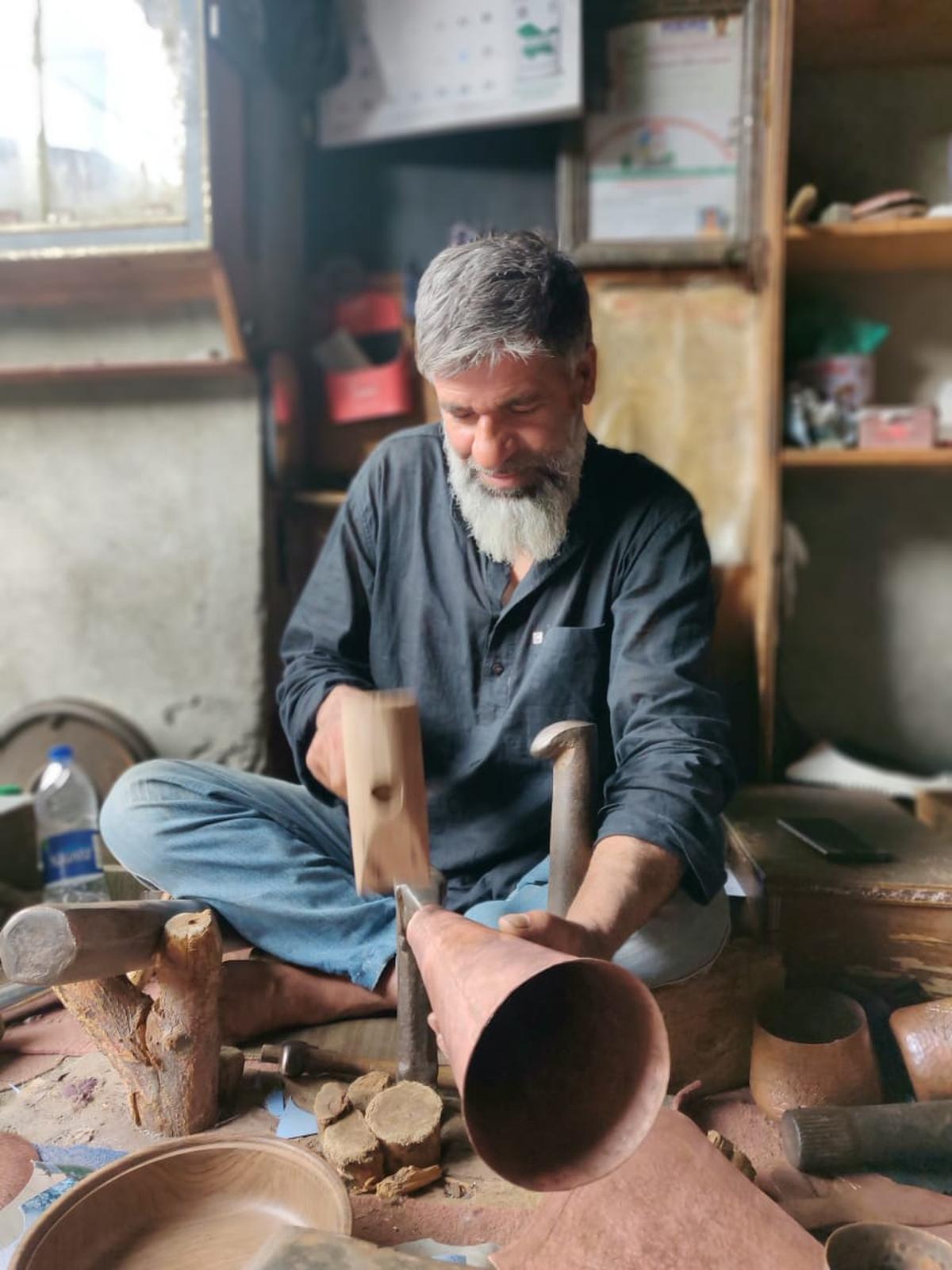
The start of a copper surahi
| Photo Credit:
Laila Tyabji
Need for discerning buyers
Hopefully, this new recognition of Srinagar will result in renewed awareness of its unique quality, bringing back international tourists and buyers. Materials, skills and makers remain in abundance.
What makes Kashmiris such consummate craftspeople? Craftsmanship is not simply commerce, but a creative response to the environment and life. Kashmiri craft is an echo of its landscape; it also expresses the Sufi philosophy at its heart. Kashmiriyat, though suffering the wounds of violence and insurgency, is essentially a civilisation in itself.
An artisan weaving a wicker basket
| Photo Credit:
Laila Tyabji
As the media celebrated the announcement of Srinagar as a World Craft City, side by side, in one of our national dailies, was a report on suicides of handloom weavers in Telangana. It was an unconscious snapshot of our craft sector. One story highlighted the potential of craft in a world that is otherwise increasingly mass-produced; the other, paradoxically, the tragedy that craftspeople, our great Indian asset, are not valued and supported.
Let’s send some love, not just to Srinagar and Kashmiriyat, but to craftspeople everywhere. While we cherish their handiwork, we often ignore the people making it.
The writer is founder member of Dastkar, and has worked with crafts in Kashmir since the 1980s.
#World #Craft #City #Srinagar #thrive
